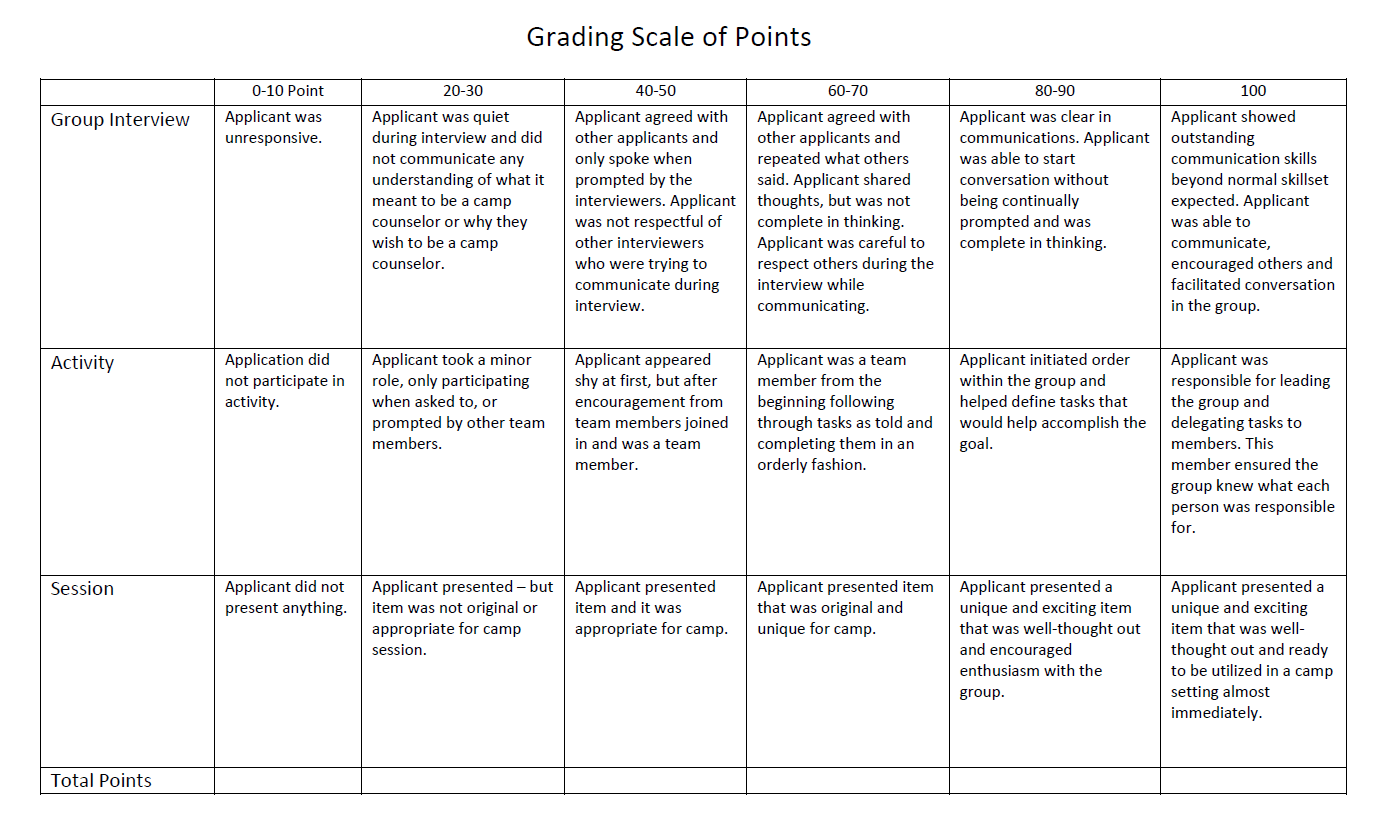The strategy that I use for teen interviews allows for youth to show their strengths and talents through a variety of stations. They are part of a group interview process, problem-solving station, and finally give a brief presentation on an idea for a session/craft idea (camp counselors) or present their problem solving
I have found that with the introduction of Project Based Learning (or PBL as the kids call it) that many of the teens I interview are ready for my questions and inquiries. I interview youth for two specific opportunities, Jr. Fair Board and 4-H Camp Counselors. Below is a more in-depth description of how I do the interview for replication purposes.
For each of the three parts – I use this chart to help guide my grading process for them.
 Rubric for Interview Activity and Session (PDF)
Rubric for Interview Activity and Session (PDF)
Part One: The Interview
I have found that conducting one-on-one interviews simply isn’t as effective as doing a group interview. I am interested in seeing how these youth interact with one another, communicate and develop a conversation. Through their project judging and special interviews they have plenty one-on-one experiences – so I choose this group method to watch them in action.
For the Camp Counselors and the Jr. Fair Board – I use the same questions – but allow for those helping interview to interject questions. We try to ask each group the same questions each time.
Here are the questions that we have been using. I am sure at some point the list has come from various places – but as this point the sources are unknown to me. So if you know the source – please share as I would be happy to give credit where credit is due.
Camp Counselor Interview Questions (PDF)
Part Two: Activity: Problem Solving and Planning
The second part of the interviews is the problem solving section. This is where we give each of the applicants a task to accomplish or problem to overcome together. For the Jr. Fair Board we kept it quite simple this year and asked them to plan an event or activity for the fair that would be fun! For the camp counselors I asked them to plan a full camp (100 kids for 2 hours) event using the big activity field. They also had to take in consideration costs, safety, and weather. This time was all theirs to plan – and we as adults use this time to watch them work. How do they interact with one another? How do they lead? Are they comfortable contributing?
Part Three: Session: Presentation of Ideas and/or Craft/Session Idea
Finally, I ask the Jr. Fair Board to present their problem solving ideas to the interviewing group. They explain what they are interested in doing, how much it may cost, and how they plan to accomplish that plan.
The 4-H Camp Counselors have a bit of a different presentation. They are asked to individually bring a session idea to present. It should be an activity for 9-15 year olds to do in a camp setting, last around 30-60 minutes, and something that youth would enjoy doing. Many of the applicants will bring their craft ideas, show the steps, and then the finished product. Other presentations have included ideas for sports to play at camp, activities using items at camp, or modifications of sessions done already to improve them.
The hardest part is the determining who we can accept for a current year’s board or camp counselor group – and who will need to wait for another year. I make a point to write notes on the letters and give written feedback to youth so they know how they can improve for the future – and so that their parents are also aware of how they can improve. This is hardest part for me as I hate telling anyone no!
I hope these guidelines help others in their interviewing process with youth.


